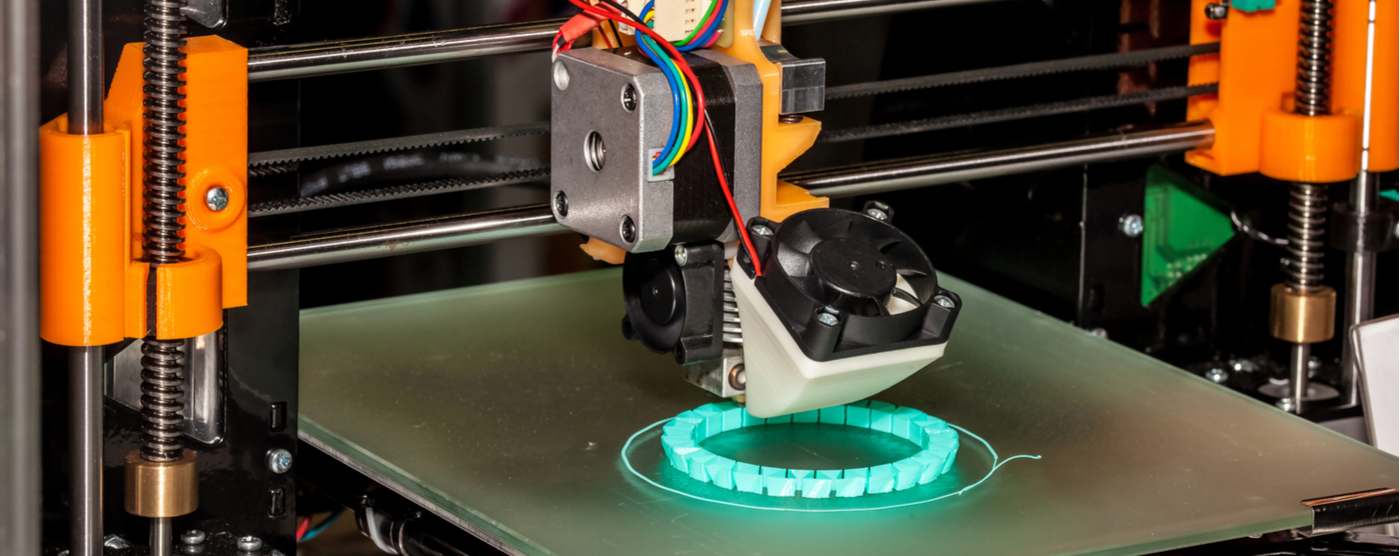The Future of 3D Printers and Sensor Technology at NASA

Unique 3D printed sensor technology may be a real gamechanger in NASA’s future efforts to send humans to the moon and possibly Mars. Recent funding is fueling a much-anticipated program that could potentially make great strides in advancing the way NASA can detect life-sustaining elements in space and even monitor the health and safety of its astronauts.
The world of 3D printing really hits home for Vaughn students and alumni. Vaughn College is at the forefront of 3D printing technology, thanks to a 3D prototyping innovation center that was launched just a few years ago. It is equipped with 15 3D printers and two 3D scanners to provide students with hands-on opportunities to transform their concepts into physical objects.
What is 3D printed sensory technology?
Think of the way a printer uses ink to print things such as newspapers, for example. Now, take that principle and add amazing innovations where the ink is replaced with nanomaterials―such as carbon nanotubes and graphene―and applying them, layer-by-layer, onto a substrate to create miniature sensors.
The result is a set of highly sensitive tiny powerhouses that are lightweight, can withstand radiation and require less power, thus keeping them stable in extreme conditions. This 3D printer could produce these tiny platforms that may someday be sent on planetary rovers for further exploration in search of life throughout the solar system.
Vaughn Alumni, Jade Kukula ’07, who earned her bachelor of science in mechanical engineering, is no stranger to 3D printers. She studied “swarm robotics” for her bachelor’s degree project. The term “swarm robots” refers to a coordination of multiple robots that can communicate with one another. Right out of college, she took her learnings from Vaughn and applied them to the Hubble Space Telescope team, where she became responsible for maintaining the health and safety of the telescopes, as well as related science and engineering data.
Making it happen
NASA engineer Mahmooda Sultana won a $2 million technology development award funded by NASA’s Space Technology Mission Directorate’s (STMD) Early Career Initiative (ECI) to further develop the nanomaterial-based detector platform. As reported by Lori Keesey of NASA’s Goddard Space Flight Center, this potentially revolutionary sensor technology stems from a self-contained platform, measuring only two-by-three inches, that is capable of sensing minute concentrations of gases, vapor, atmospheric pressure and temperature. Additionally, this platform would then transmit the data via a wireless antenna. Pretty cool, right?
For the next two years, Sultana and her team at NASA’s Goddard Space Flight Center in Greenbelt, Maryland, will be working on this amazing program. They will design the sensor platform to determine the best combination of materials to achieve parts-per-billion concentrations of water, ammonia, methane and hydrogen. Northeastern University will then take Sultana’s design and use the 3D printing system to complete the process, simplifying the integration and packaging process.
Up until now, sensors were built one at a time and then integrated into other components. The advent of 3D printing will change that by allowing technicians to print a suite of sensors on one platform.
Interested in pursuing an engineering and technology career?
Vaughn offers a wide range of associate and bachelor’s degrees to prepare you for an exciting career in engineering, technology, management or aviation, that will set you apart from the competition. Here are a few of the majors offered at Vaughn which provide students with a rigorous and comprehensive course of study to enable them to become successful in their chosen fields.
